Aug 31 to Sept 6
A group of “mourners” gathered on Sept. 2, 1989 at the railroad crossing near Taipei’s Zhonghua Road (中華路) to mark the end of an era. They looked left and right repeatedly to confirm that the train really wasn’t coming. From that day on, Taipei’s trains ran underground.
“In the past, these people found it a huge inconvenience to stand there and wait for the trains to pass. But it has become such a part of their life that it now feels odd for the trains to be gone,” reported the Liberty Times (Taipei Times’ sister newspaper). Workers began removing the tracks that day and three months later, no trace was left.
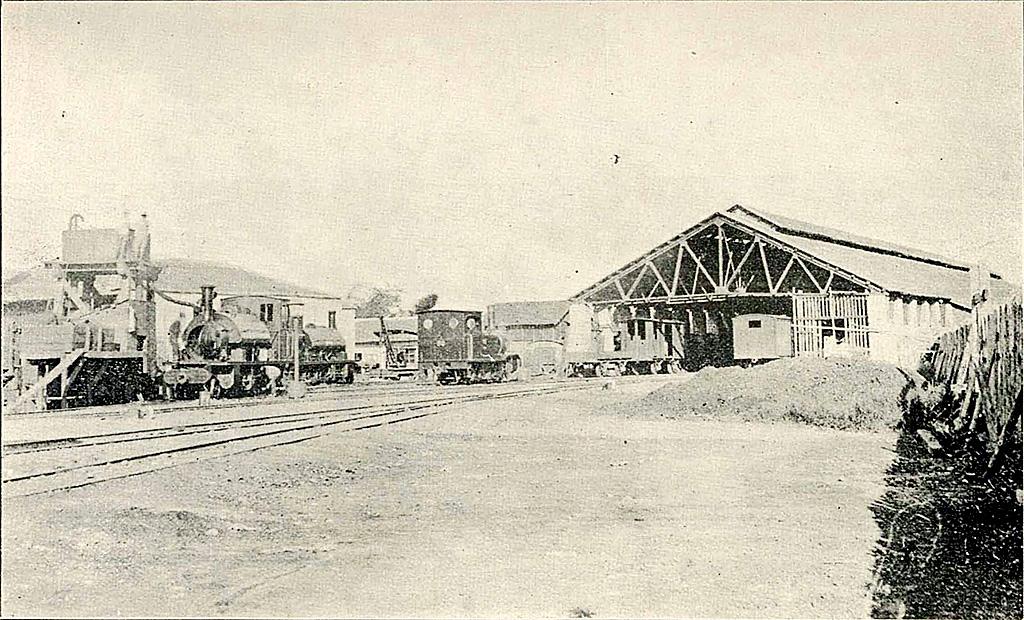
Photo courtesy of Wikimedia Commons
That same day, the newly opened Taipei Main Station saw over 160,000 visitors passed through it, many just to see the state-of-the-art, Chinese palace-style structure and ride the nation’s first underground railway.
The Liberty Times reported that people were especially impressed with the 526 public phones, “escalators that could be found everywhere, colorful waiting seats, large information screens and air conditioning at just the right comfort level.” Complaints included confusing signage, not enough restrooms and long lines to purchase tickets.
The building is considered the fourth-generation Taipei Railway Station (there was a temporary one that most historians don’t count), and is still in use today. The first generation was a simple steel structure built by the Qing Empire in 1891 upon the completion of the Taipei-Keelung line. Since most goods were transported by water before trains were introduced, this first station was referred to as a “railway wharf.”
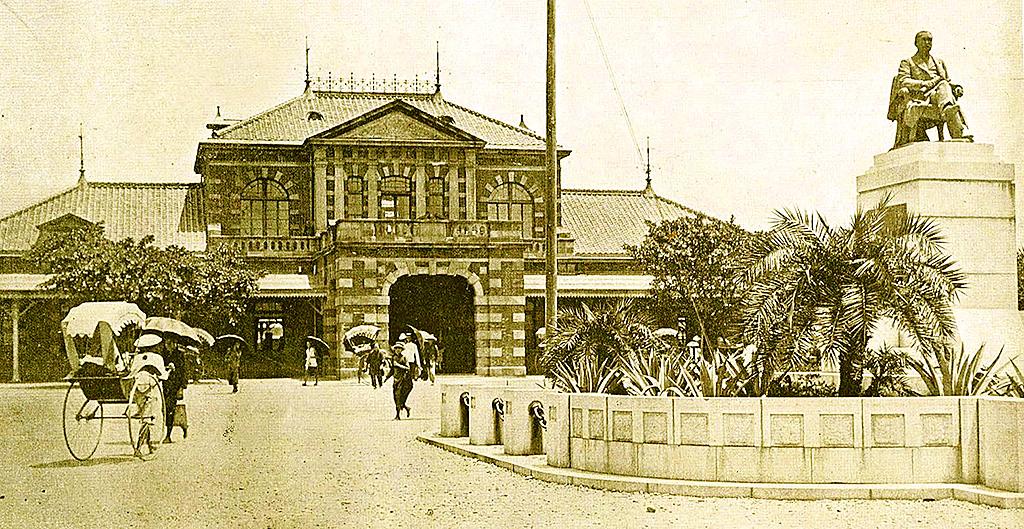
Photo courtesy of Wikimedia Commons
The station was expanded, demolished and rebuilt several times over the next century, each iteration serving as a major landmark to the nation’s capital.
‘TRENDY ACTIVITY’
Liu Ming-chuan (劉銘傳), the Qing governor of the newly created Taiwan Province, submitted a request to the emperor in 1886 to establish a rail system the following year. In addition to the obvious benefits of transportation, commerce and development, Liu noted that a railroad would make it easier to transport troops in case of a foreign invasion. The French captured Keelung during its war with the Qing in 1884, and defenses were a legitimate concern. Construction began in June 1887.
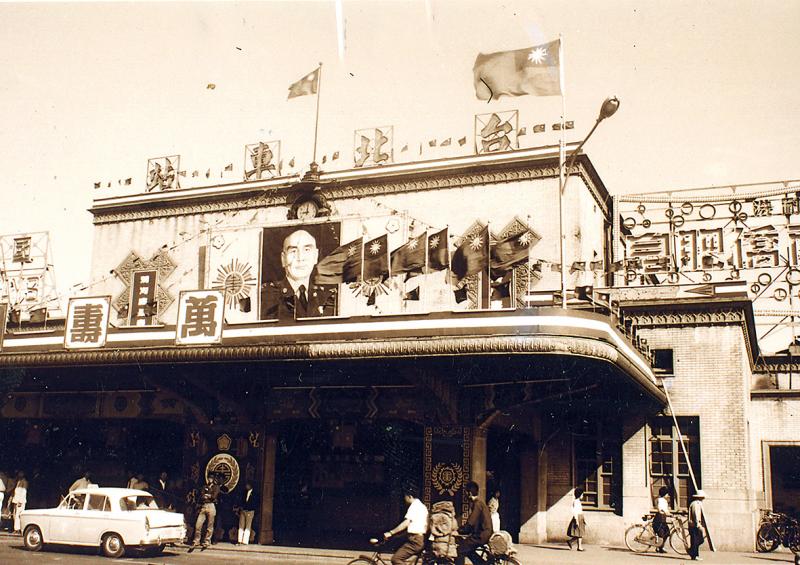
Photo courtesy of Wikimedia Commons
Entire families traveled from surrounding areas to Taipei in August 1888 to witness the test run of the railroad, which then consisted of one stop between Dadaocheng and Xikou (錫口, near today’s Songshan Train Station). It officially opened to the public on Nov. 16 with two German-made steam engines making four trips per day. At 8-meters long, the passenger cars were very cramped, and people were required to check all their belongings in the cargo car.
Having never been in a vehicle that fast before, many curious passengers just took the train back and forth for fun, making it a “trendy” activity for the first few months.
“Many passengers didn’t even have any business in Xikou; they just rode the train so they could boast to everyone that they had experienced the ultra-fast scientific wonder,” writes Wu Hsiao-hung (吳小虹) in the book, Return to Taipei Station of the Qing Era (重回清代台北車站).
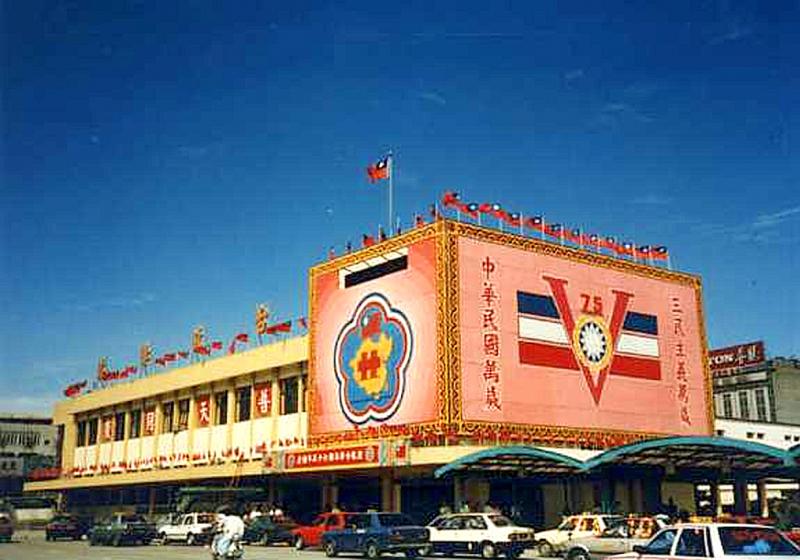
Photo courtesy of Wikimedia Commons
There were no proper stations at first, just a “ticketing office” at each stop. The Dadaocheng stop was located not far from today’s Taipei Main Station, just beyond the North Gate (北門, Beimen). These ticketing offices usually consisted of a few traditional red-brick houses, with room for employee dorms and storage; some smaller stops just had a thatched-roof hut. The first “railroad restaurant” was established when the line extended to today’s Sijhih (汐止) area in April 1890.
By October 1891, the Taipei-Keelung line was complete. On Oct. 20, the first-generation Taipei “railway wharf” was inaugurated. It was a simple steel frame structure with sloped corrugated roofs that covered the crude “platform.”
By 1893, the line had reached Hsinchu, with nearly 1,000 passengers per day. Qing-era operations were plagued by poor management and corruption, and fare-dodging was rampant. Officials and soldiers rode the train for free under pretenses of official business, and also transported personal goods. The officials did a shabby job at maintaining the equipment, and after five years the railway administration had to cut back the frequency of rides due to engine damage.
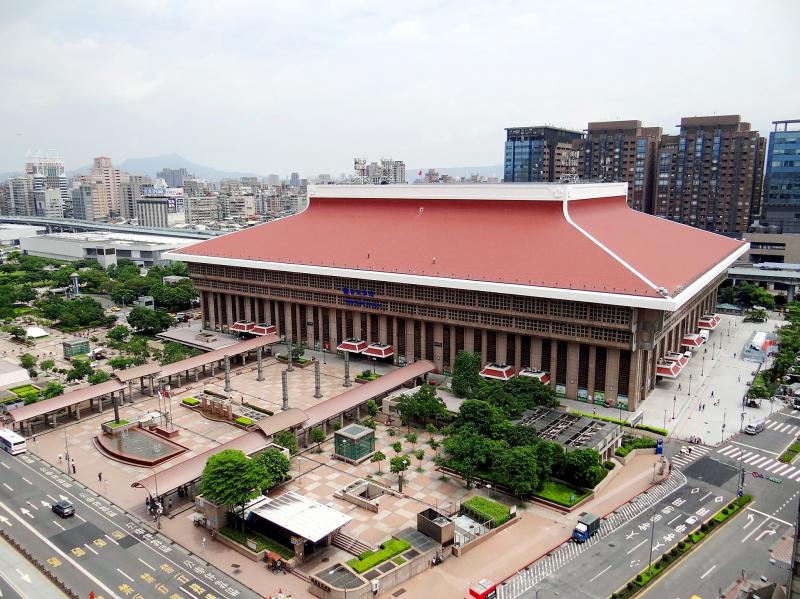
Photo courtesy of Wikimedia Commons
EXPAND AND REBUILD
The Qing ceded Taiwan to Japan in 1895. Taipei Station was reportedly torched during the chaos when the Japanese first occupied the city, but the metal structure survived. The colonizers fixed it up and added a passenger waiting room the following year.
After a massive rerouting project and the opening of the Tamsui line, the Japanese discontinued the original station in 1901, later leasing it to what would become today’s megacorporation Kawasaki Heavy Industries. It was demolished in 1908, and Dadaocheng Station was established in its place. The second-generation Taipei Station was located further east by today’s Zhongshan N Road (中山北路) and featured a renaissance-style red brick building that was much more elegant and imposing than the previous structure. Right outside the entrance was Taiwan’s very first public telephone booth, writes Wu.
The Taiwan Railway Hotel was established across the street in 1908, but it was destroyed by US airstrikes during World War II. Today, the Shin Kong Life Tower sits in its place.
Taipei Rear Station was built from Alishan red cypress in 1923 as the new terminus to the Tamsui Line. During the 1950s, young people moving to Taipei to seek their fortunes exited here, where headhunters greeted them enthusiastically and took them to one of the numerous job placement agencies north of the station. The Tamsui line was terminated in 1988 with the advent of the MRT; the wooden building burned in a fire the following year before any preservation efforts could be made. A small plaza at the intersection of Civic Boulevard (市民大道) and Taiyuan Road (太原路) memorializes this lost structure.
Due to increasing demand, the third-generation, modernist-style building was inaugurated in 1941 with greatly expanded facilities, including a post office, restaurants and lockers.
This station remained in use until February 1986, when the government’s underground railway project warranted a new structure to accommodate the changes. A temporary station was set up next to the construction site — some consider this the fourth-generation Taipei Station and the current one the fifth, but most historians do not count temporary stations. It was torn down in 2000.
Taiwan in Time, a column about Taiwan’s history that is published every Sunday, spotlights important or interesting events around the nation that either have anniversaries this week or are tied to current events.

On April 26, The Lancet published a letter from two doctors at Taichung-based China Medical University Hospital (CMUH) warning that “Taiwan’s Health Care System is on the Brink of Collapse.” The authors said that “Years of policy inaction and mismanagement of resources have led to the National Health Insurance system operating under unsustainable conditions.” The pushback was immediate. Errors in the paper were quickly identified and publicized, to discredit the authors (the hospital apologized). CNA reported that CMUH said the letter described Taiwan in 2021 as having 62 nurses per 10,000 people, when the correct number was 78 nurses per 10,000

As we live longer, our risk of cognitive impairment is increasing. How can we delay the onset of symptoms? Do we have to give up every indulgence or can small changes make a difference? We asked neurologists for tips on how to keep our brains healthy for life. TAKE CARE OF YOUR HEALTH “All of the sensible things that apply to bodily health apply to brain health,” says Suzanne O’Sullivan, a consultant in neurology at the National Hospital for Neurology and Neurosurgery in London, and the author of The Age of Diagnosis. “When you’re 20, you can get away with absolute

When the South Vietnamese capital of Saigon fell to the North Vietnamese forces 50 years ago this week, it prompted a mass exodus of some 2 million people — hundreds of thousands fleeing perilously on small boats across open water to escape the communist regime. Many ultimately settled in Southern California’s Orange County in an area now known as “Little Saigon,” not far from Marine Corps Base Camp Pendleton, where the first refugees were airlifted upon reaching the US. The diaspora now also has significant populations in Virginia, Texas and Washington state, as well as in countries including France and Australia.

May 5 to May 11 What started out as friction between Taiwanese students at Taichung First High School and a Japanese head cook escalated dramatically over the first two weeks of May 1927. It began on April 30 when the cook’s wife knew that lotus starch used in that night’s dinner had rat feces in it, but failed to inform staff until the meal was already prepared. The students believed that her silence was intentional, and filed a complaint. The school’s Japanese administrators sided with the cook’s family, dismissing the students as troublemakers and clamping down on their freedoms — with